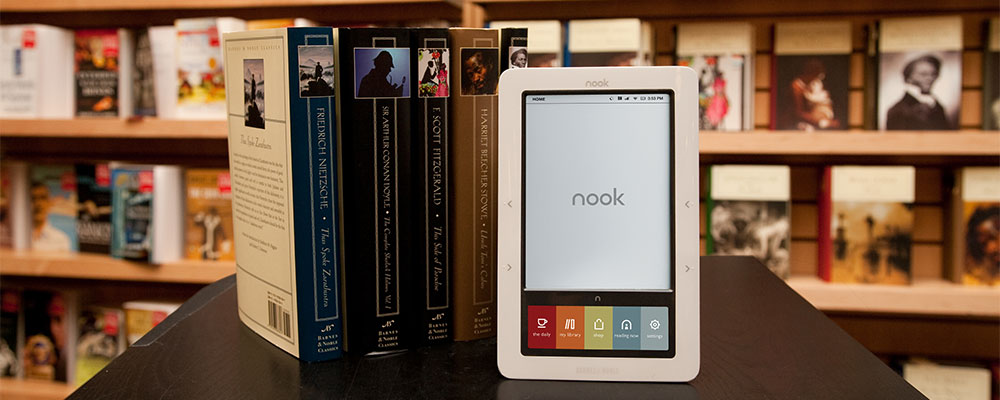
It’s time to commiserate for Barnes and Noble. The once-great brick-and-mortar citadel of books is back-pedaling on its Nook e-reader. Why? Because customer’s emotional engagement expectations for the most-important purchase drivers in the e-book / tablet category “All-in-One Convenience” and “Organic Operations” – are not being met.
Real books haven’t paid off for them like they did in the pre-e-book era. Barnes and Noble did respond with their e-book, Nook, but revenues have dropped there too, year-over-year by about 35%. They announced the other day that they’ll stop making the Nook color tablets. They’ll continue to offer the basic black-and-white e-readers, but they won’t be doing the manufacturing for the tablet line, and instead will work with a yet-to-be-named partner to make and co-brand that line of products.
Is it too little, too late? You have to give Barnes and Noble credit for trying to keep up with competition like Amazon and Apple, but it doesn’t take a genius to read between the lines that B&N is looking to exit the hardware business. Earlier this week the company said they were planning to dramatically slash prices. And the decline of dedicated e-book readers hasn’t helped their situation either.
E-readers had a two-year lead on tablets, and by then the marketplace had pretty much cleared out the early adopters, who thought it cool to be able to carry around their library in something that fit in a (large) pocket and weighed just south of eight ounces.
Now when you look at what consumers emotionally and technically expect (if your answer was “everything” you are 100% correct!) brands and products able to meet ’sometimes even exceed’ consumer expectations, are the brands seeing positive buying behavior in the marketplace and are posting profits.
When you look at what consumers “expect” from an e-reader (the category Ideal is configured at 100%), e-readers rate 74% (down 11% from six months ago). Tablets rate 96% (up 4% in that same time period). You do the math.
Brands must meet customer expectations
Brand success and sales and attendant profits, always takes place within the paradigm of high (and higher) consumer expectations for what drives brand engagement. Most of the really important ones are emotionally-based. In this case, the most-important drivers are “All-in-One Convenience” and “Organic Operations.” Our engagement measures can identify these 12 to 18 months before they appear in traditional research or get articulated in focus groups.
The trick to being successful, of course, is making sure you’re able to read the emotional engagement drivers in your category correctly and ahead of the competition.